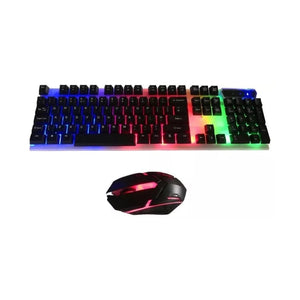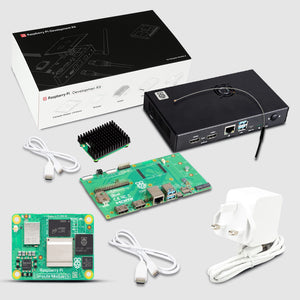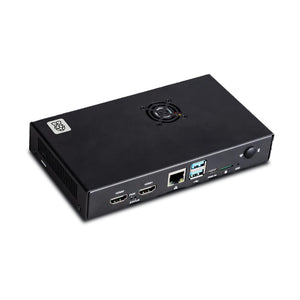Today marks an exciting milestone in the Raspberry Pi family with the launch of the Raspberry Pi Pico 2 W, a wireless-enabled variant of the popular Pico 2. Priced at just $7, this new board promises to bring enhanced performance and wireless connectivity to your Internet of Things (IoT) projects, combining the power of the RP2350 microcontroller with built-in Wi-Fi and Bluetooth support.

Whether you're an engineer, hobbyist, or enthusiast, the Pico 2 W is a versatile and affordable platform that is perfect for prototyping and building connected devices. Let’s dive into what makes this new version so special and why it’s the ideal centerpiece for your next IoT creation.
What's New with the Raspberry Pi Pico 2 W?
The Pico 2 W builds on the success of the original Pico W by upgrading to the new RP2350 microcontroller. This new chip offers significant improvements in terms of processing power, memory, connectivity, and security. Here’s a breakdown of what’s new:
- The RP2350 Microcontroller
The RP2350 is the next evolution of the RP2040, the microcontroller that powered the original Pico. The RP2040 quickly became a favorite among hobbyists and engineers, thanks to its dual-core ARM Cortex-M0+ processor, high-performance I/O, and low-cost design. The RP2350 takes this a step further with:
- Faster cores: The RP2350 offers enhanced processing power compared to the RP2040, making it suitable for more demanding applications.
- More memory: You’ll get more on-chip memory, allowing for larger, more complex projects.
- Floating point support: This addition boosts performance for floating-point operations, which are crucial for tasks like signal processing or data analysis.
- Optimized power consumption: The RP2350 has been designed to operate more efficiently, extending battery life for portable IoT projects.
- Security improvements: The microcontroller features Arm’s TrustZone technology, providing a more robust security model to protect data in your connected devices.
- Built-in Wireless Connectivity
The Pico 2 W comes with the same CYW43439 wireless modem found in the Pico W, which means you get Wi-Fi (2.4GHz 802.11n) and Bluetooth 5.2 connectivity out of the box. This makes it the ideal board for building wireless IoT devices that need to communicate with other devices or the cloud.
- Wi-Fi: Easily connect your projects to the internet, enabling cloud-based applications or remote control capabilities.
- Bluetooth 5.2: Pair your Pico 2 W with Bluetooth devices, such as sensors, actuators, or smartphones, opening up a wide range of wireless communication possibilities.
- Breadboard-Friendly Form Factor
Like the original Pico, the Pico 2 W retains the same compact, breadboard-friendly design. This makes it easy to integrate into your existing prototypes, or use in combination with other Raspberry Pi hardware, sensors, and accessories. If you're building something more professional, the Pico 2 W also paves the way for scaling with other wireless modules like the upcoming RM2 radio module, which has already been successfully deployed on the Pico Plus 2 W.
Ideal for IoT Projects
At its core, the Pico 2 W is designed for Internet of Things (IoT) applications. It can serve as the brain of a connected device, providing the local compute, storage, and interfacing capabilities needed to interact with the physical world, while also connecting back to the cloud.
Here are just a few ways you can use the Pico 2 W in your IoT projects:
- Smart Home Automation: Create wireless sensors, actuators, or controllers that can interact with smart home platforms or custom cloud services.
- Environmental Monitoring: Build a wireless network of temperature, humidity, or air quality sensors that send data to the cloud for analysis.
- Wearables: Leverage Bluetooth 5.2 to build low-power wearable devices that communicate with smartphones or other Bluetooth-enabled gadgets.
- Robotics: Use the Pico 2 W to control motors, sensors, and cameras in robots that need wireless communication for remote control or telemetry.
Powerful Development Tools and Libraries
The Pico 2 W is supported by an ecosystem of development tools, making it easy for beginners and experts alike to start building. You can program the Pico 2 W in C, C++, or MicroPython, with official libraries for both Wi-Fi and Bluetooth connectivity. Whether you prefer the simplicity of MicroPython or the performance of C, the board is flexible enough to meet your needs.
The RP2350 also supports the Programmable I/O (PIO) subsystem, which provides low-level control for interfacing with sensors, displays, or other peripherals at high speeds. This makes it an excellent choice for projects that require precise timing or complex data manipulation.
The Future of the Pico 2 Series
Raspberry Pi has big plans for the Pico 2 series in the coming years. With the success of the Pico 2 W, the team is looking ahead to future releases that will continue to push the boundaries of what’s possible with affordable microcontrollers. Expect even more exciting developments in early 2025 as Raspberry Pi expands its offerings for IoT and embedded systems.
The Raspberry Pi Pico 2 W is a powerful, flexible, and cost-effective platform for anyone interested in building connected devices. With its upgraded RP2350 microcontroller, built-in wireless connectivity, and broad software support, it opens up exciting new possibilities for IoT development. Whether you’re just starting out with embedded systems or looking to expand your IoT portfolio, the Pico 2 W is an excellent choice for your next project.
At only $7, the Pico 2 W is one of the best deals on the market for anyone looking to build wireless IoT applications. Don’t miss out — get yours today!
Ready to Build? Get Your Raspberry Pi Pico 2 W
Check out the official Raspberry Pi website or your favorite electronics retailer to grab your Pico 2 W and start building your next connected project!








